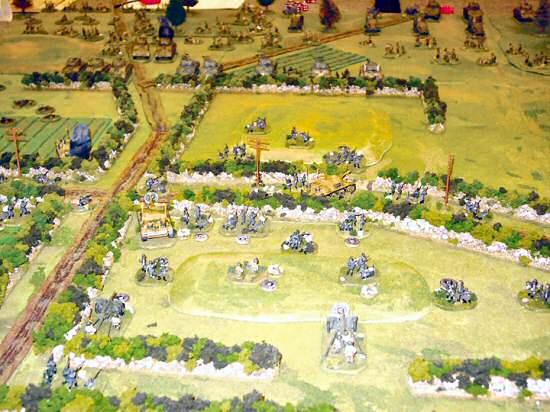
The Logistics of a Panzer Division From Primary Sources
127 pages. Introduction, 16-page black-and-white photo section.
During the course of WWII, two useful German military manuals were captured: The German Armoured Division training manual (published in December 1940), and The German Motorized Infantry Regiment field manual (published in March 1941). The U.S. Military Intelligence Service published translations of both manuals in 1942.
This book contains a two-page introduction, both translated manuals, and a photo section with pictures of German tanks.
The German Armoured Division comprises these chapters:
- Characteristics and Organization
- Role of the Armoured Division
- Employment of the Armoured Division
- Components of the Armoured Division
- Reconnaissance
- Movement
- Deployment
- Attack
- Pursuit
- Defence
- Withdrawal from Action
- Special Conditions
- Rest
- Services
This version is missing four pages of charts and diagrams that were part of the original translation, as well as two poor-quality photographs.
The German Motorized Infantry Regiment comprises these chapters:
- Nature and Tasks of Motorized Infantry
- Weapons and Their Performances
- Influence of Terrain on Movement and Tactics
- Principles of Fire Employment
- Principles of Tactical Employment
- Reconnaissance and Observation
- Movement
- Deployment and Detrucking
- Attack
- Pursuit
- Defence
- Breaking Contact
- Fighting Under Special Conditions
- Rest Period
- Organic Transportation
- Combat Trains
- Supply
Included as appendices to the infantry manual are a table of organization, a deployment diagram, a table of column lengths for different troop units, and a guide to daily rates of fuel consumption. These are presented in a different order than in the original translated manual.
Both manuals are quick to read, and provide a commander-level perspective on general operations. Given the date of authorship (1940), I was surprised at how thoroughly the doctrines had been worked out. Another surprise was the lack of mention of blitzkrieg by name as a doctrine, although the manuals do emphasize the shock of the assault, the importance of hitting the enemy flanks while covering your own flanks, and the unique abilities of the armoured formations. There is an interesting discussion about when to attack with tanks versus motorized infantry, when motorized infantry should attack mounted versus dismounted, and crucial differences between infantry equipped with halftracks versus trucks.
The 1942 translation is good, although uses 'strategical' for 'strategic', and I was left wondering what German term was translated as 'loophole' (bunker?).
The editor for this edition missed 'Word War Two' (twice!), and uses English spelling in the introduction ('Motorised' and 'Armoured') since he's English and this book is published in the U.K.
The book's subtitle claims these manuals cover "the logistics of a panzer division"; these manuals actually cover operations, with some references to logistics but not in detail. The back cover blurb claims this book "…provides an insightful look in to the workings of the Military Intelligence Service" – actually, that's not in this book, either.
Gamers will find these manuals to be a useful primer on the proper usage of armoured forces in their gaming. While both manuals are in the public domain and can be easily located online in digital formats, the book offers the convenience of the printed format.
Reviewed by ![]() Editor in Chief Bill
Editor in Chief Bill ![]()
![]() .
.












